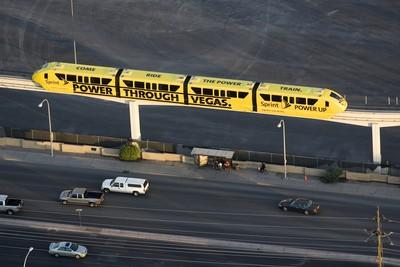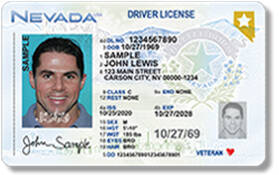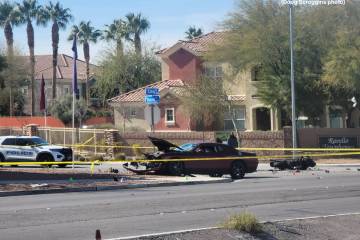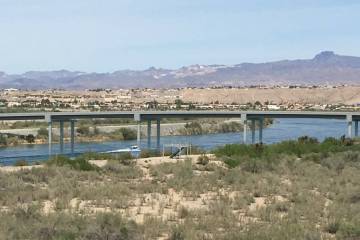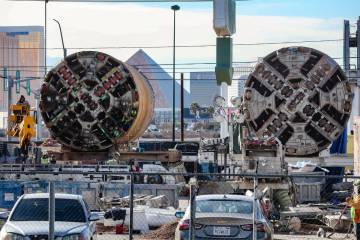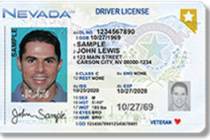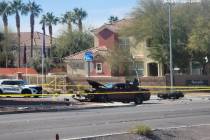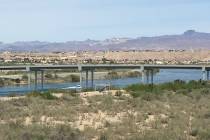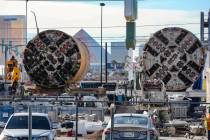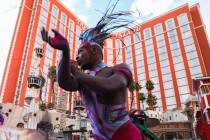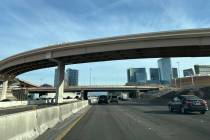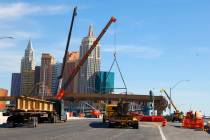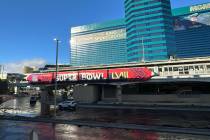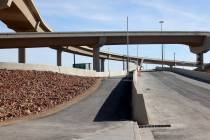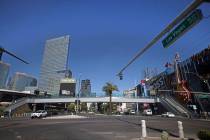One monorail projection got it right
In the three years the Las Vegas Monorail has been shuttling empty seats back and forth behind the Strip, we've heard excuse after excuse why ridership levels have never met what was originally billed.
First, it was the mechanical problems that kept the monorail sidelined for most of 2004. Then it was the time needed for tourists to know the monorail was there. Then it was a fare hike. And the time necessary for new marketing efforts to take root. They might have cried about global warming for all I know.
But there's another theory that monorail people have mostly ignored: that the monorail's sluggish ridership levels of today could have reasonably been expected from the start.
That's an answer that came to mind recently as I read a draft ridership analysis prepared in 2000 -- four years before the monorail's first paying passenger hopped on board -- by Wendell Cox, an Illinois-based consultant hired by monorail foes to counter the rosy claims made by monorail backers.
Back then, monoplanners trumpeted expectations of more than 54,000 riders per day, projections that Cox's report called "among the most aggressive in U.S. transit history and could emerge as the least accurate."
Cox noted that the Las Vegas Monorail was "projected to carry more passengers per route mile than the New York subway, the London Underground and the Stockholm Metro, and more than double that of the most heavily used new rail systems in the United States."
"It is not likely that such an intensity of ridership would be attracted," Cox wrote.
He predicted between 18,500 and 26,600 riders per day would use the monorail.
Last year, the monorail averaged just over 19,000 daily riders.
"I apologize for being too optimistic," Cox said recently.
There wasn't too much Cox got wrong.
Cox forecast high fares would discourage riders; then a 2006 fare hike prompted a 30 percent drop in ridership.
Cox said sight-seeing walkers would avoid riding a train behind, and not on, the Strip. He expected the monorail would drain its cash reserves between 2006 and 2008. A credit rating firm is now predicting that could happen as soon as next year.
"I knew I wasn't that far off," Cox said.
So, how did Cox get things so right, while monobuilders got things so wrong?
Cox said he just followed the facts.
"Nobody ever gave this stuff a laugh test. And it was laughable from the first day," Cox said. "What I put in that report was not shocking. I just compared it to things that were similar," namely other rapid transit lines that failed to gain traction with customers.
The track record of such peer projects meeting ridership and cost projections is "absolutely dreadful. What's going on is something called 'strategic misrepresentation.'" Cox said. "Basically, lying.
"They wanted to build the project. They believed in the project. That doesn't make them any less wrong."
Why does that happen? In general, because facts might get in the way, Cox believes.
"People tend to overestimate ridership and underestimate cost, fearing if they don't do that projects won't be approved," Cox said. "I don't know if that's what happened here."
A kind of faith-based approach to mass transit projects, I suppose.
Sometimes, such projects are enabled by the work of consultants who profit by telling project backers what they want to hear. Consultants take their cut and walk away, leaving the financial mess to others.
"I'd love to see projectors have to take a financial stake in their projections. I bet we'd see more conservative projections," Cox said.
Folks now at the Las Vegas Monorail Co., where there was a management purge some time back, disavow the original expectations, without offering new ridership targets.
"Current monorail leadership was not involved in the development of the original projections," Ingrid Reisman, a monorail company vice president, said in a prepared statement, adding that Cox's report is much ado about nothing.
"The report has no effect on the operations of the Las Vegas Monorail," Reisman's statement said.
True enough. But Cox hopes his report's claims and the monorail's ridership reality will get those asked to hold the bag on such projects to first ask what's really inside.
"I would hope what it would do is cause taxpayers and public officials to look more suspiciously at the work produced by consultants whose clients they're trying to please," Cox said.
Thankfully, in this case taxpayers aren't liable for anything on the privately financed system. Bond buyers and a New York insurance company would eat the $650 million cost of building the monorail if it ever goes belly-up.
Meanwhile, if anybody needs a monorail ride, step right up. Plenty of seats are available.
If you have a question, tip or tirade, call the City Desk at 383-0264, or send an e-mail to roadwarrior@reviewjournal.com. Please include your phone number.
ROAD WARRIORMORE COLUMNSDiscuss this column in the eForums!
Various overnight lane restrictions can be expected on U.S. Highway 95 from Las Vegas Boulevard to Henderson from 9 p.m. to 5 a.m., Sunday nights through Friday mornings.
The Jones Boulevard northbound offramp from U.S. 95 will be closed from 9 p.m. tonight through Aug. 18 for reconstruction of Jones Boulevard. The Jones Boulevard onramp to U.S. 95 northbound is closed until late summer.
Martin Luther King Boulevard at U.S. 95 will be closed in each direction from 9 p.m. to 5 a.m. through Saturday.
Drivers can expect lane restrictions on northbound and southbound Interstate 15 between the California-Nevada state line and the Cajon Pass near Devore, Calif., in San Bernardino County, Calif. Drivers should anticipate delays and watch for updates on specific closures. To sign up for e-mail alerts on I-15 road work in California or for more project information, go online to www.caltrans8.info. For phone updates on Southern California road work, call (916) 445-7623 or (909) 383-7960.



